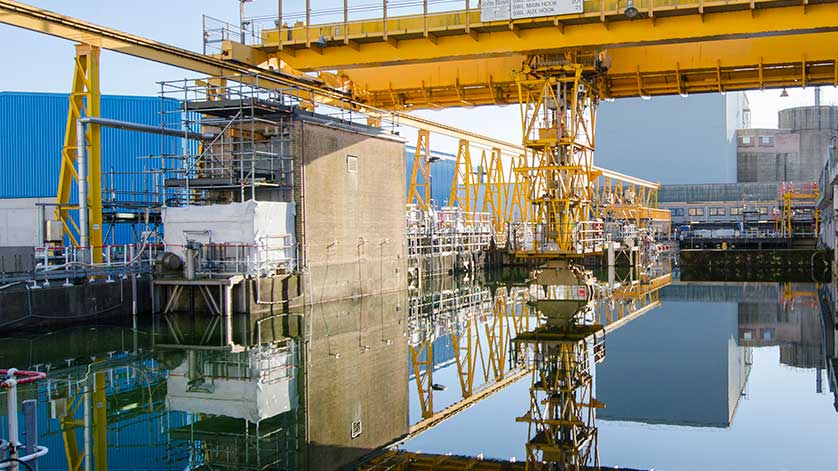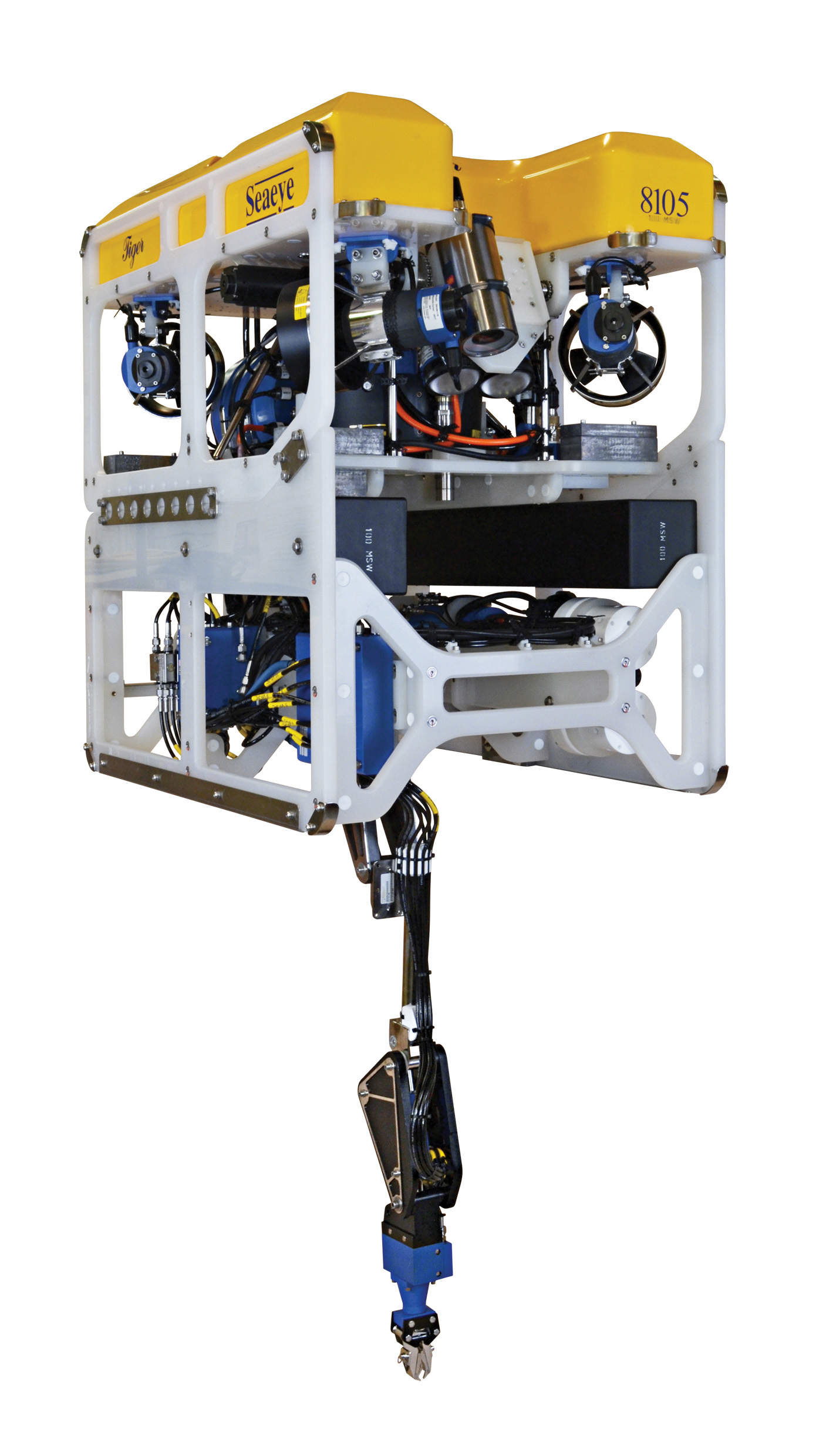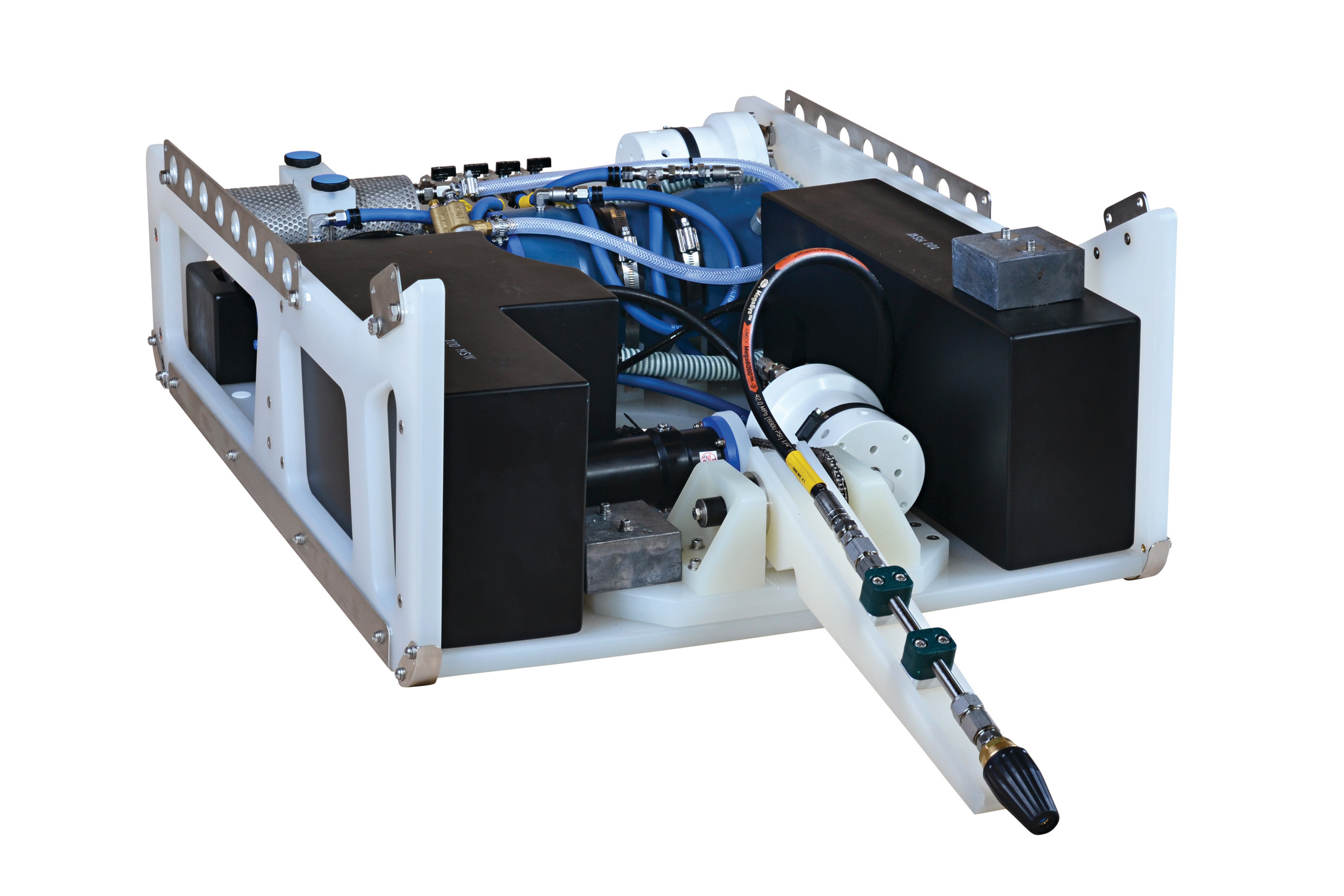Saab Seaeye Tigers ROV’s Clear Nuclear Waste

Two Saab Seaeye Tiger robotic underwater vehicles are to work in the radioactive ponds at the Sellafield nuclear site.
They were chosen because their proven thruster reliability is vitally important in a highly corrosive environment where maintenance intervention is hazardous to humans.
 “Reliability is key for the health of operators,” explains Phil Toomey, Technical Manager at Sellafield Ltd. “They must wash down the Tigers during maintenance checks as exposure to radiation for operators is carefully limited, so unplanned downtime will quickly exhaust their safe working period in any one year.”
“Reliability is key for the health of operators,” explains Phil Toomey, Technical Manager at Sellafield Ltd. “They must wash down the Tigers during maintenance checks as exposure to radiation for operators is carefully limited, so unplanned downtime will quickly exhaust their safe working period in any one year.”
Tiger with under-slung manipulator skid
Sellafield Ltd intends the Tigers to work continuously for six months at a time between scheduled maintenance periods.
The Tiger’s thruster working life of 10,000 hours was a major appeal.
Phil Toomey describes how the Tiger’s role is to help clean up and empty the legacy storage ponds by picking up and sorting nuclear material, including radioactive fuel bars. The nuclear waste can often be buried in about 30 cms of sludge, which is also highly radioactive and hazardous.
Each fuel bar is around one metre long, weighs 15 kilos and is gripped in the middle by the Tiger’s under-slung manipulator, monitored and identified, then transferred to a skip which can be removed from the pond for safer storage in a more modern facility.
 Water-jet skid
Water-jet skid
In addition to the under-slung manipulator skid, a four-function forward facing manipulator skid is available, together with an under-slung water-jet cleaning skid. Also on board the Tigers are a color zoom camera and a down and rear view camera.
“We wanted a proven robotic vehicle,” says Phil Toomey, “and we also liked that the Tiger’s skid technology makes it easy to swap skids.”
Sellafield Ltd was influenced in its choice of the Tiger by evidence of its extensive field work in hostile underwater environments around the world.
Tigers mark a new era of functionality and reliability for machines that have become an essential part of the nuclear waste retrievals toolbox.
Rob Smith, Retrievals Manager for Legacy Ponds, said: “It’s a shift into a ‘production line mentality’ for waste retrievals. These machines will be at the nuclear coalface for longer than our existing fleet can manage. They will be our new workhorses for hazard and risk reduction.”
Sellafield Ltd plans to have removed all bulk fuel and sludge from its legacy ponds by 2022.

